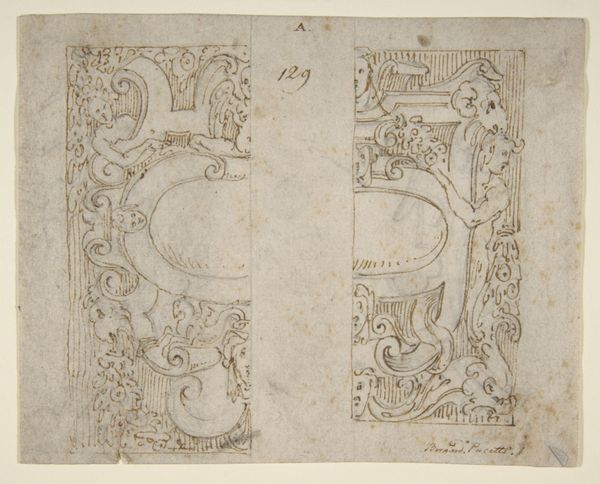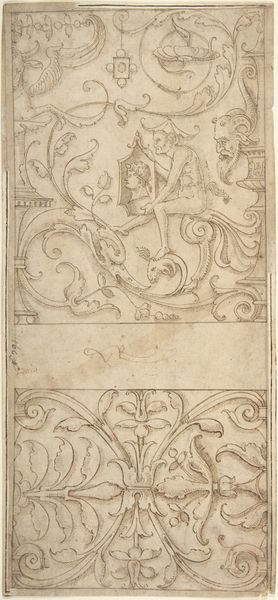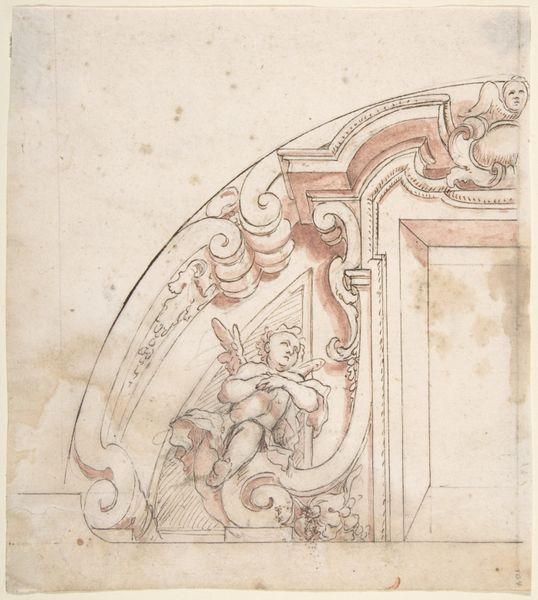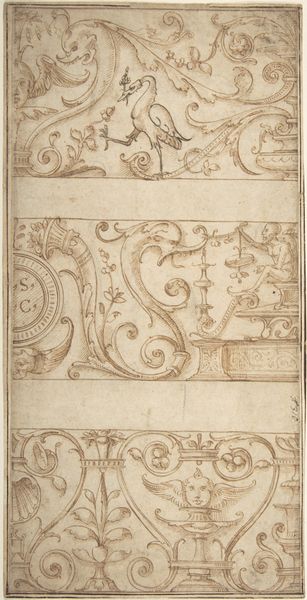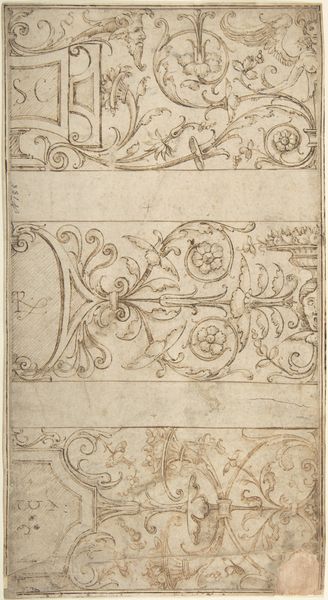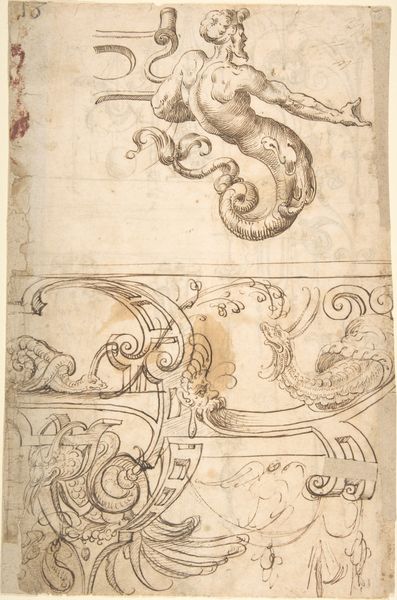
drawing, ornament, print, paper, pencil
#
drawing
#
ornament
# print
#
figuration
#
paper
#
form
#
11_renaissance
#
coloured pencil
#
pencil
#
line
#
italian-renaissance
Dimensions: sheet: 2 15/16 x 4 1/2 in. (7.4 x 11.4 cm)
Copyright: Public Domain
Curator: Here we have a "Fragment of Strapwork Design," a 16th-century drawing now residing at the Metropolitan Museum of Art. The artist is unknown, and the medium appears to be pencil on paper. Editor: It’s fragmentary indeed! My first impression is how dynamic this simple sketch feels, almost vibrating with potential energy. There are suggestions of classical elements, like columns, supporting something bigger. Curator: Yes, "strapwork" was a very popular decorative motif in the Renaissance. It imitates cut leather or carved wood, often used in architectural ornamentation, furniture, and even in printed book borders. The circulation of these designs became widespread due to printmaking. Editor: I’m particularly drawn to how the artist is rendering figures –notice the muscularity contrasted with the ethereal quality of the surrounding decorative forms. This makes me wonder what materials this design would later be translated into; would those contrasts still hold? Curator: It would depend on the commission and the specific craft. Strapwork could be realized in various materials – stone, plaster, wood… and this drawing, made in pencil, was likely intended as a guide, a model for artisans to follow. Its creation reflects a burgeoning market for art that had use in society. Editor: So, you see it mainly as a blueprint for a larger, perhaps more elaborate project? I’m more fascinated by it as an artifact in itself; this drawing marks an instance in time of materializing the transition from concept to object and also embodies labor itself. It almost gives me a sense of accessing a craftsman's creative process directly. Curator: Precisely. Its function within artistic and artisanal circles during the Renaissance reveals much about workshops' processes, patronage, and the interconnectedness between design and production. Editor: And that, for me, speaks volumes about our own relationship to skill, material, and the art object even now. Curator: Absolutely. Considering it today offers valuable insights into both its original intent and its lasting legacy in shaping design principles across cultures and time.
Comments
No comments
Be the first to comment and join the conversation on the ultimate creative platform.
